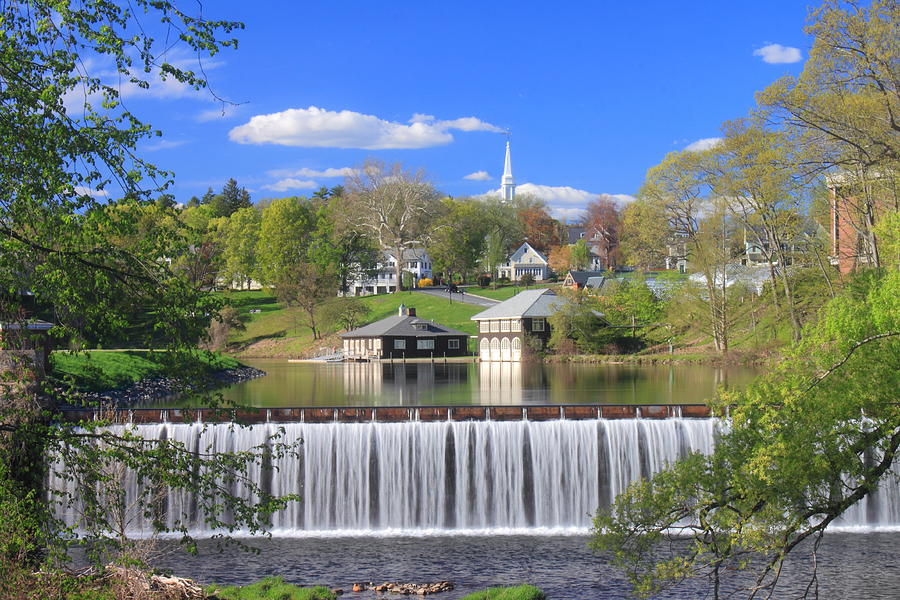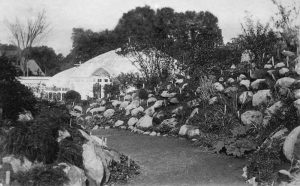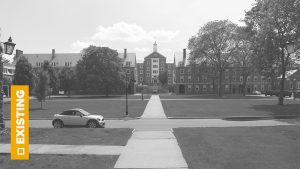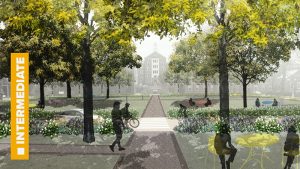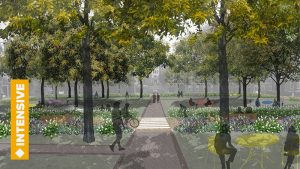Should Smith build local organic gardens on campus to promote small, sustainable farming? Should we build a squirrel lookout point? Is there a tree on campus you think should be cut down? Are there any specific trees you want to plant on campus? Do you notice that people don’t really hang out on Seelye Lawn? Should we take the chains down and let people walk free of guilt across the grass? For a few decades, Smith students had jobs as “grass cops” to police people from walking across the lawns. I’m glad that’s changed. Now more than ever, you yourself have an opportunity to change and reshape Smith’s landscape!
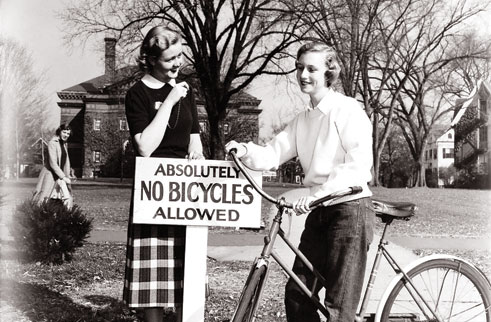
This past semester, I took the Introduction to Landscape Studies class, led by Professor Reid Bertone-Johnson. On March 2nd, 2020, Signe Nielsen, FASLA, landscape architect, Smith alum, and founding principal at Matthew Nielsen Landscape Architects gave a talk to our class. Nielsen was hired to work alongside the Board of Trustees to think ahead 20 years and create the Smith College Landscape Master Plan, to help the campus adapt to climate change, to make it more inclusive, and to help integrate the landscape into daily learning and pedagogy. Her lecture served as a wake up call for me that Smith is constantly rebuilding itself, and now I – and all students – have a chance to have a say in what I want.
One of the first things that Signe pointed out was that Smith College is built on the Connecticut River lands of the Montauk Indians. The founders chose a unique place that is both near a town and near a water source. Frederick Law Olmsted and his sons originally designed and worked on the campus. Smith’s unique botanic garden was instituted in 1895 — 24 years after Smith was founded — and today is considered a level three arboretum, level four being the highest level of accreditation. According to Signe, a great deal has changed since Olmsted’s plans, and she is worried that his original plans are not as open as they could be to Smith’s current population and evolving environment.
Her team is already working on projects such as College Lane, leading with the question of how they can make it more accessible to pedestrians and bikers. They are considering making it all closed off to vehicles, or making it a one-way lane only, so there would be more room for foot and pedal traffic. Furthermore, they are already planning ways to make a new, well-lit walkway by the pond and river, and when it rains more accessible to people who, for example, are in wheelchairs. These are big changes that will make campus look and feel very different! What do you think of them?
Signe also mentioned that she wants the landscape to better reflect and promote our courses, and suggests making local sustainable gardens on campus, and altering the landscape in ways to encourage bird watching, which I think is a great idea. I also think Smith should open up access to the woods and trails on the other side of Mill River – just after the athletic field – to encourage people to explore the beautiful trails, fields, and secret dog parks that most students don’t know exist back there.
I bring this to your attention because I too want Smith to be an inclusive place, and I want students to know and understand how the college is planning its future, and working on projects that maybe most of us aren’t aware of, and which will impact the community in big ways. I don’t want it to go unnoticed, as it did for me until I took the landscaping class. Nielsen and her team actually asked students, in a poll put up in the CC and in workshops around campus, “This is your campus. How would you design it?” She reported that, in response to the poll and workshops, many students say campus feels very formal, because for example, there are no places to study, or to naturally gather, in large groups.
Landscapes are continually evolving, and according to Nielsen, for cultural landscapes like the Smith College campus, it is important to give voice to the cultural heritage that lives there. I definitely want to see Smith acknowledge in its landscape its rich history, including that of the first peoples, whose original land Smith’s campus sits on. I would like to see the history that is addressed in Otelia Cromwell Day expressed throughout the landscape, namely the history of non-white students, staff, and faculty at Smith. This could also help popularize the need to hire and accept more black and American Indian students, staff, and faculty, who have a unique history with the land, and who combined only make up 4.25% of the enrolled student population, both undergraduate and graduate. This could be done through permanent exhibits on campus, outdoor art pieces, or buildings or outdoor areas for all students named after important historical figures like Cromwell. How can we integrate every bit of Smith–first gen students, black and brown students, disabled students–into the landscape? We are lucky to call such a beautiful place our home, and there is so much more to unlock, protect, plant, and explore going forward, and it’s important that we all exert ourselves to keep our landscape fresh and alive, while acknowledging its sometimes very rough past and its present, like some other colleges and universities have begun doing.
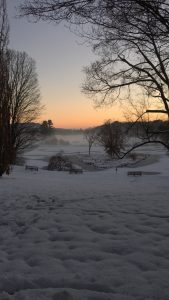 This beautiful campus is something that inspired me to accept Smith as my institutional home for four years. It was a taste of home far away from home. Frederick Law Olmsted designed the campus, as well as the beautiful tree-lined boulevard I grew up on in Brooklyn–Eastern Parkway– not to mention Central Park, the green root of my hometown, and Prospect Park–the greenest place in Brooklyn, where my parents got married. I remember when I first toured Smith, walking around and being encompassed by the bright green trees, Paradise Pond, and the winding paths organically manicured throughout campus. I knew this would be a place to breathe and to be, a place to feel connected to home, and that it was grounding, nurturing, and supportive for the long haul of college.
This beautiful campus is something that inspired me to accept Smith as my institutional home for four years. It was a taste of home far away from home. Frederick Law Olmsted designed the campus, as well as the beautiful tree-lined boulevard I grew up on in Brooklyn–Eastern Parkway– not to mention Central Park, the green root of my hometown, and Prospect Park–the greenest place in Brooklyn, where my parents got married. I remember when I first toured Smith, walking around and being encompassed by the bright green trees, Paradise Pond, and the winding paths organically manicured throughout campus. I knew this would be a place to breathe and to be, a place to feel connected to home, and that it was grounding, nurturing, and supportive for the long haul of college.
Because of the current pandemic, many of Smith’s landscape projects are on hold and most students and faculty are off campus. Now is a great time for people to collect their thoughts and prioritize what’s important for them to see in the evolving Smith landscape. To get involved, I firstly urge you to look at the detailed Smith’s Landscape Master Plan, which addresses several of the issues I brought up above, and more. Furthermore, please share in the comment section below any ideas you have for how Smith should redesign the campus! Lastly, I strongly encourage you to take the 2-credit Introduction to Landscape Studies class. It’s usually a bigger-sized class, with lectures each week from people involved in landscaping around the world. It’s a fabulous course to open up your eyes to the intersection of nature, science, culture, art, philosophy, history, and more in your environment; an important and fruitful course for any major, and a chance for you to wake up, evolve, express, and reshape the landscape you live and learn in, and sometimes call home.
